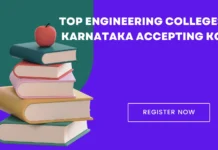National Education Policy 2020 UPSC The National Education Policy was introduced to make the Indian education system encyclopedically feasible. The government aims to give the Indian scholars a more competitive edge in comparison to their global counterparts, establish world- class educational institutions throughout the country. Read below about New National Education Policy for forthcoming UPSC Examinations with all important and crucial pointers.
National Education Policy 2020
lately, the Indian government has replaced a 34- time-old National Policy on Education, framed in 1986, with the National Education Policy( NEP) of 2020. In 1964, the need for a public education policy was felt when Congress MP Siddheshwar Prasad blamed the government for lacking a vision and gospel for education in the country. In the same time, the government had appointed a 17- member Education Commission, headed by the also UGC Chairperson D S Kothari, to draft public education policy, for invariant and coordinated nation-wide education policy in India. On the base of recommendations by the commission, Parliament passed the first education policy in 1968. The alternate National Education Policy got passed in 1986, under the Prime Ministership of Rajiv Gandhi; it got revised in 1992 when P V Narasimha Rao was Prime Minister.
crucial Highlights of the New Education Policy
Higher Education
Opening up of Indian advanced education to foreign universities, Dismantling of the University subventions Commission( UGC) and the All India Council for Technical Education( AICTE), preface of a four- time multidisciplinary undergraduate programme with multiple exit options, and termination of the M Phil programme. Phasing out of all institutions offering single aqueducts & that all universities and sodalities must aim to come multidisciplinary by 2040. Top Global Institutions have been encouraged to open premises in India. The policy aims to increase Gross Registration rate in Advanced Education to 50 per cent by 2035.
School Education
Making board examinations “ lightly ” by reducing the syllabus to retain “ core rudiments ” and thrust on “ existential literacy and critical thinking ”. Restructuring of the 10 2 system of academy education, into “ 5 3 3 4 ” design corresponding to the age groups 3- 8 times( foundational stage), 8- 11( introductory), 11- 14( middle), and 14- 18( secondary). This will bring early nonage education( also known aspre-school education for children of periods 3 to 5) under the dimension of formal training. Thepre-school children should also get advantaged from themid-day mess programme. scholars until Class 5 should be tutored in their mama lingo or indigenous language. In government seminaries there will be focus on foundational knowledge and numeracy, free breakfasts being added to free lunches. Vocational education along with externships will be handed to scholars from Class 6 onwards.
When NEP guidelines got enforced?
The policy is meant to transfigure the education system by 2040. Some proffers will be enforced incontinently, for illustration the Ministry of Human Resource Development will transfigure into the Ministry of Education. originally, from the 2020- 21 academic time onwards the four- time undergraduate degrees with multiple entry- exit options will be introduced in the 20 IoEs( Institute of Excellence), while other institutes will continue with the being three- time degree courses. The beingM.Phil scholars can continue till the completion of their degree, although new admissions for the programme won’t be accepted. The National Testing Agency will introduce a airman interpretation of the common entrance test by December 2020, which will be used for admission to all IoEs and central universities in 2021. Some Indian Institutes of Technology are working on developing the specialized structure of the Academic Credit Bank, which will also be established by December, and come applicable to all new scholars joining central universities coming time. The National Foundational knowledge and Numeracy charge which is to be enforced by 2025 will be launched by the end of this time. The National Council of Educational Research and Training( NCERT) will introduce the curricular frame for the new academy structure, including early nonage care, by the coming academic time.
Significance
numerous children took education as a burden on them which redounded in a large population, which is well- educated, but utmost of what they’ve read isn’t useful for them. So, the NEP seeks to change this approach by bringing a methodical reform in India’s education system and attempts to transfigure both Intent and Content of education. NEP focuses on Learning, Research and Innovation to make the academy, council and university experience Fruitful, Broad- grounded and one that guides to one’s natural heartstrings. The emphasis on the interdisciplinary study will insure the focus is on what the pupil wants to learn rather than what the pupil is anticipated to do by society. The public education policy emphasizes on creating job generators rather than job campaigners. That is, in a way an attempt to bring reform in our mindset and in our approach. This will profit Indian youth in getting world- class exposure and openings, and help them prepare for global competition as well. This will also help in structure world- class institutions in India, making India a mecca of global education.
Review
The government has yet to finalise the draft Advanced Education Commission of India bill which has been sagging in the ministry for over a time. The COVID- 19 and lockdown have created a backing crunch for the government( the 1968 NEP was also handicapped by a deficit of finances) and the provision of free breakfasts can only be considered in the coming academic time if a budget allocation is made to cover it. The process of converting combined sodalities into degree- granting independent institutions and also further into completely- fledged universities is estimated to take at least 15 times, as the Centre will have to give fiscal backing for this purpose. The Ministry feels that an increase in government backing of education to 6 of GDP will be sufficient to cover the fiscal counteraccusations of the NEP. still, such an increase in backing has been proposed but not achieved for the last half- century. The offer to make the mama lingo the medium of instruction till Class 5, which has stirred up the fiercest debates, is dependent on state governments. This offer is criticised by colorful countries like Tamil Nadu. Way Forward of National Education Policy In a civil system, any educational reform can be enforced only with support from the States, and the Centre has the giant task of erecting a agreement on the numerous ambitious plans. The idea of a National Higher Education Regulatory Council as an apex control organisation is bound to be begrudged by States. The centre should move the countries regarding the establishment of a public body for aptitude tests. The deadline to achieve universal knowledge and numeracy by 2025 should be a top precedence as a thing that will crucially determine progress at advanced situations.
Other Important UPSC Notes









